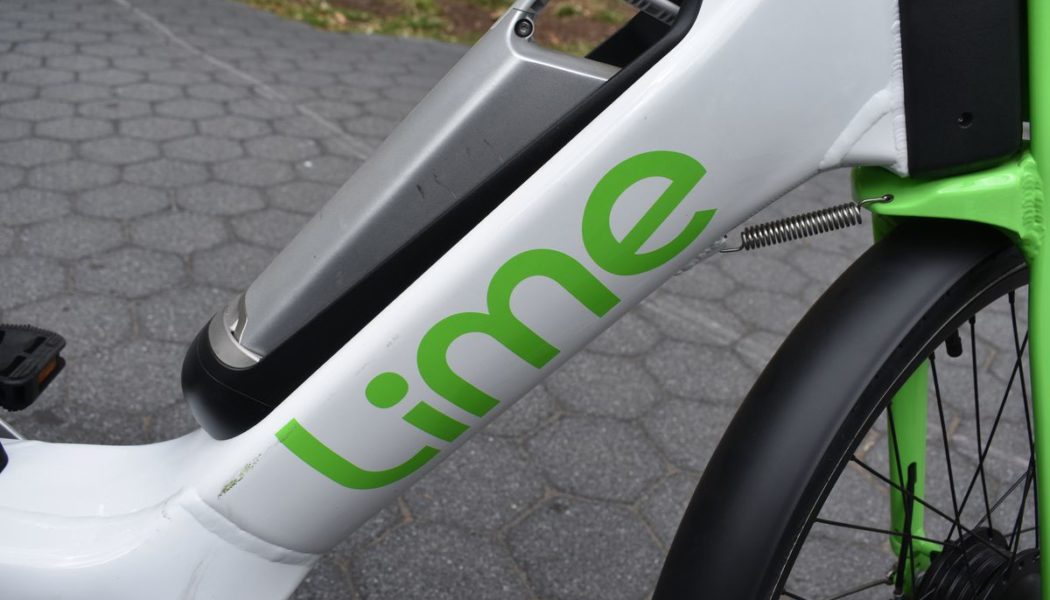Lime’s next-generation electric bikes are finally making their North American debut. Nearly a year after announcing its plans to spend $50 million on a major e-bike expansion, the San Francisco-based micromobility company says it will deploy the first wave of new bikes in Washington, DC, starting this week.
Lime says the new bikes are significantly improved over the ones currently in service, which the company inherited from Jump after acquiring the bike-share company from Uber in 2020. The $50 million investment will largely go toward designing, manufacturing, and assembling its next-generation bike, which start rolling out this year. The new model comes with a more powerful 350-watt motor and a swappable battery capable of up to 25 miles of range.
In addition to a new dual-speed automatic transmission, the bikes also feature swappable batteries that are interchangeable with the company’s fleet of electric scooters. This will improve the customer experience, said Lime’s director of Mid-Atlantic and Northeast operations, by making it less likely that they’ll encounter vehicles with drained batteries.
“Now we can actually get the batteries quicker,” Lime’s Paul Holley told The Verge. “You don’t have as many low battery vehicles out in the field. Our task turnaround times are a lot quicker.”
:no_upscale()/cdn.vox-cdn.com/uploads/chorus_asset/file/23162079/DSC_0953.JPG)
The swappable batteries are certainly the most important new feature in Lime’s next-gen e-bike. Lime views the ability to swap batteries between scooters and bikes as not just good for customers but also its own bottom line. Lime saves money both by simplifying its manufacturing process and operationally by reducing the amount of work that needs to be done by its teams working in each city.
“When you unify that battery ecosystem and you isolate it to a single battery, what that really does is it increases the density of the work that needs to get done out in the field,” Holley said. “So now you don’t necessarily have to have two separate teams that are kind of just running out in their own lane and just doing their own thing.”
Not every scooter and bike company is convinced. Bird, for example, has staked out an opposing position, arguing swappable batteries are typically smaller and hold less charge than non-swappable ones. The company has also argued that swappable batteries have a larger carbon footprint because they require more vehicle miles traveled to retrieve, replace, and recharge scooters.
Holley argued that swappable batteries don’t necessarily translate into less power or lower range; Lime can choose to install larger batteries if it wants. “We can do that within the context and the confines of a swappable battery ecosystem,” he said. “You can go up and down in terms of size and range and amp hours and all those types of things.”
There are other new features on the bike: the handlebars are being replaced with ones similar to Lime’s scooters, there’s a phone holder in the front basket, and the bike will be able to hit speeds of up to 20mph (depending on local regulations). It weighs 72 pounds, which is heavier than the 65-pound electric Citi Bikes.
I got a chance to try out one of Lime’s new bikes late last year. Riding the bike over from Brooklyn to Lower Manhattan, I was impressed by the motor’s ability to dole out power. The boost was nearly instantaneous as far as I could tell, without any of the jerkiness or slow motor build-up of some lesser e-bikes. It’s far from the sexiest e-bike I’ve ever ridden, but that’s by design since Lime’s e-bikes are built for power, stability, and durability.
That said, I don’t think people who use bike-share will abandon their preferred e-bikes and flock to Lime’s new models. Bike-share is a tool of convenience, and customers generally use the bike that’s nearest to their location.
Lime will keep its cherry-red Jump bikes in operation, with no plans to phase those out in favor of the new Lime-branded e-bikes. The company has stated that it wants to be a multimodal provider of many different types of low-speed, electric vehicles. In 2020, Lime added pedal-less e-bikes from Wheels to its app in several cities as part of a new effort to integrate third-party micromobility providers. And it also rolled out electric mopeds in several markets, including Paris and Washington, DC.
It’s great to see Lime investing in new technical specifications in an effort to broaden the offerings it has available in its app. Scooters are good for tourists or people who are out for a short jaunt. But bikes are better for longer distances, and e-bikes, in particular, are great at replacing car trips. In that respect, Lime will have a real powerful tool in its arsenal for its broader campaign to promote electric, zero tailpipe-emission transportation.









